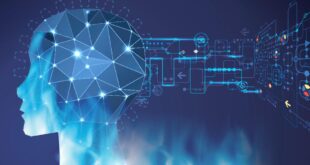The 10 uses of robots have transformed various industries and daily activities, showcasing their versatility and efficiency. While robots were once confined to the realms of science fiction, they are now integral to many sectors, from manufacturing and healthcare to agriculture and space exploration. In this comprehensive blog post, we will delve into these applications, supported by factual data and case studies, to highlight how robots are reshaping our lives. We will employ the Problem-Agitate-Solution (PAS) copywriting framework to provide a structured and engaging exploration of this topic.
1. Manufacturing and Assembly
The Problem in Manufacturing
The manufacturing industry has long grappled with numerous challenges, including the demand for higher productivity, rising labor costs, and the inherent dangers associated with manual labor. As of 2021, the global manufacturing sector was valued at approximately $41.7 trillion, with businesses constantly striving to optimize operations while minimizing expenses.
Agitating the Issues
These challenges not only lead to delays in production schedules but also result in increased operational costs and higher rates of workplace injuries. According to the Bureau of Labor Statistics, there were 2.8 million nonfatal workplace injuries and illnesses reported in 2020. Such statistics underscore the urgent need for innovative solutions in manufacturing.
The Solution: Robotics in Manufacturing
Robots are increasingly being integrated into manufacturing and assembly lines, automating repetitive tasks and enhancing productivity. In automotive production, for example, robots can assemble parts with remarkable precision and speed. Tesla has been at the forefront of this revolution, implementing robotic systems that have reportedly boosted production efficiency by 30%.
Case Study: Tesla’s Automated Assembly Line
Tesla’s Gigafactory in Nevada is a prime example of robotic integration in manufacturing. The use of advanced robotics has streamlined processes, reduced labor costs, and improved safety conditions by minimizing human involvement in hazardous tasks. Additionally, robots can work continuously without breaks, significantly increasing output and meeting the growing demand for electric vehicles.
2. Healthcare
The Problem in Healthcare

The healthcare sector is currently facing significant challenges, including staffing shortages, high patient-to-nurse ratios, and an ever-increasing demand for quality care. The World Health Organization reported a global shortage of 5.9 million healthcare workers in 2021, highlighting the urgency of addressing these issues.
Agitating the Healthcare Dilemma
The shortage of healthcare professionals can lead to burnout among existing staff and compromise the quality of patient care. A survey by the American Nurses Association revealed that 70% of nurses felt overwhelmed due to their job demands, putting additional pressure on an already strained system.
The Solution: Robotics in Healthcare
Robots are being increasingly utilized in healthcare to help alleviate some of these pressures. Surgical robots, such as the da Vinci Surgical System, allow for minimally invasive procedures, resulting in shorter recovery times and less discomfort for patients. A study published in the Journal of Robotic Surgery found that robotic-assisted surgeries had a 50% reduction in complication rates compared to traditional surgeries.
Case Study: The da Vinci Surgical System
The da Vinci Surgical System has transformed surgical practices across various fields, including urology, gynecology, and cardiothoracic surgery. This advanced robotic system enables surgeons to perform complex procedures with enhanced precision and control, resulting in better patient outcomes. Furthermore, robots can assist with patient monitoring, medication delivery, and companionship, significantly enhancing the healthcare experience.
3. Agriculture
The Problem in Agriculture
The agricultural sector faces mounting pressure to produce sufficient food to feed a rapidly growing global population, which is projected to reach 9.7 billion by 2050. Traditional farming methods are often labor-intensive and inefficient, leading to increased costs and resource depletion.
Agitating Agricultural Challenges
These challenges contribute to food insecurity and environmental degradation. The Food and Agriculture Organization reported that about 811 million people faced hunger in 2020, emphasizing the critical need for innovative solutions in agriculture.
The Solution: Robotics in Agriculture
Robotic technology is revolutionizing agriculture by introducing autonomous tractors, drones, and robotic harvesters. Companies like Harvest Automation have developed robots designed to assist in the harvesting process, reducing labor costs and increasing efficiency.
Case Study: Drones in Precision Agriculture
Drones equipped with advanced sensors are being employed to monitor crop health, optimize resource use, and improve yields. For instance, the National Institute of Food and Agriculture found that utilizing robotics in agriculture could lead to productivity increases of up to 30%. By automating various tasks, farmers can focus on strategic decision-making and sustainability efforts.
4. Logistics and Warehousing
The Problem in Logistics

The logistics and warehousing industry grapples with challenges such as high operational costs, inefficiencies in inventory management, and the growing demand for faster delivery times. The global logistics market was valued at $9.6 trillion in 2021, further complicating the need for optimization.
Agitating the Logistics Crisis
Inefficient logistics can result in delayed shipments, increased costs, and unhappy customers. A survey by Convey revealed that 80% of consumers would not shop with a retailer again after a negative delivery experience, underscoring the importance of reliability in this sector.
The Solution: Robotics in Logistics
Robots are reshaping logistics and warehousing by automating tasks such as picking, packing, and sorting. Companies like Amazon have integrated robotic systems into their fulfillment centers, leading to a reported 20% increase in efficiency.
Case Study: Amazon’s Fulfillment Centers
Amazon’s use of Kiva robots in their fulfillment centers exemplifies the impact of robotics in logistics. These autonomous mobile robots (AMRs) navigate warehouses to transport goods, significantly reducing the need for manual labor and streamlining operations. A study by the McKinsey Global Institute estimates that implementing robotic systems in logistics could save companies up to 25% in operational costs.
5. Education
The Problem in Education
The education sector faces difficulties in engaging students and providing personalized learning experiences. Traditional teaching methods often fail to cater to the diverse learning styles of students, leading to disengagement and poor academic performance.
Agitating the Educational Struggle
According to the National Assessment of Educational Progress, only 37% of eighth graders were proficient in mathematics in 2019, highlighting the urgent need for innovative teaching methods that foster student engagement.
The Solution: Robotics in Education
Robots are being integrated into education to enhance learning experiences and promote engagement. For instance, programmable robots like LEGO Mindstorms enable students to learn coding and robotics through hands-on experiences.
Case Study: Robotics in the Classroom
A study published in the International Journal of STEM Education found that students who interacted with educational robots exhibited a 15% improvement in problem-solving skills. Additionally, robotic tutors provide personalized learning experiences tailored to individual student needs, bridging the gap between different learning styles.
6. Home Assistance
The Problem in Home Management

As the global population ages and lifestyles become busier, many individuals struggle to maintain their homes and manage daily tasks. Approximately 54 million Americans were aged 65 or older in 2020, and this number is expected to rise in the coming years.
Agitating the Challenges of Home Management
This situation can lead to feelings of isolation and overwhelm, particularly among the elderly who may require assistance with daily activities. According to a report by AARP, nearly 90% of seniors prefer to age in place but often encounter difficulties in doing so.
The Solution: Robotics for Home Assistance
Robots are increasingly designed to assist with household tasks, making life easier for individuals and families. Robotic vacuum cleaners, such as the Roomba, autonomously clean floors, while robotic lawnmowers maintain lawns with minimal human intervention.
Case Study: Companion Robots
Companion robots like ElliQ are developed to provide social interaction and reminders for medications and appointments. Research from the Institute for Robotics and Intelligent Systems has shown that robotic home assistants significantly improve the quality of life for elderly individuals, promoting independence and reducing feelings of loneliness.
7. Space Exploration
The Problem in Space Exploration
Exploring outer space presents numerous challenges, including the dangers of radiation, extreme temperatures, and vast distances. As of 2021, only 600 people have traveled to space, highlighting the risks associated with human missions.
Agitating the Dangers of Space Travel
Human missions to space are costly and fraught with dangers, making it crucial to explore alternative methods for research and exploration. NASA estimates that sending a human to Mars could cost around $100 billion, emphasizing the need for robotic alternatives.
The Solution: Robotics in Space Exploration
Robots play a vital role in space exploration by conducting research and gathering data in environments inhospitable to humans. Rovers like NASA’s Perseverance and Curiosity have successfully explored the Martian surface, collecting samples and transmitting valuable data back to Earth.
Case Study: NASA’s Mars Rovers
NASA’s Mars rovers have provided unprecedented insights into the planet’s geology and potential for past life. These robotic missions significantly advance our understanding of Mars while minimizing costs and risks associated with human space exploration.
8. Entertainment
The Problem in the Entertainment Industry

The entertainment industry continuously seeks innovative ways to engage audiences and create immersive experiences. Traditional forms of entertainment may not fully capture the attention of younger audiences.
Agitating the Challenge of Audience Engagement
As a result, many entertainment venues struggle to attract visitors, leading to declining revenues. According to Statista, the global video game market was valued at $159.3 billion in 2020, indicating a significant shift in consumer preferences towards technology-driven entertainment.
The Solution: Robotics in Entertainment
Robots are increasingly utilized in the entertainment sector to create interactive experiences and enhance storytelling. Theme parks like Walt Disney World have integrated animatronic characters and robotic attractions to captivate visitors.
Case Study: Disney’s Robotic Attractions
Disney’s use of advanced robotics in attractions such as the “Avatar Flight of Passage” ride demonstrates the potential of robotics in entertainment. By creating lifelike characters and environments, Disney enhances visitor engagement and satisfaction. Additionally, AI-driven characters in video games provide realistic interactions, further immersing players in the experience.
9. Disaster Response
The Problem in Disaster Response
Natural disasters present significant challenges in terms of response and recovery efforts. In 2020, the world experienced 22 major disasters, resulting in billions of dollars in damages and countless lives affected.
Agitating the Impact of Inadequate Response
Inadequate response efforts can lead to loss of life, prolonged recovery times, and increased economic impacts. The United Nations reported that 97 million people were affected by disasters in 2020, emphasizing the need for effective solutions.
The Solution: Robotics in Disaster Response
Robots are being deployed in disaster response scenarios to assist in search and rescue operations and damage assessment. Drones equipped with cameras and sensors can survey affected areas, providing real-time data to emergency responders.
Case Study: Drones in Earthquake Response
During the 2018 Indonesia earthquake, drones were used to assess damage and locate survivors, improving response times significantly. A study published in the Journal of Humanitarian Logistics and Supply Chain Management found that using robotics in disaster response improved efficiency and effectiveness, ultimately saving lives.
10. Environmental Monitoring
The Problem in Environmental Protection

Environmental degradation poses significant threats to ecosystems and human health. Climate change, pollution, and deforestation are pressing issues that require immediate action. In 2020, the World Meteorological Organization reported that global temperatures were rising at an unprecedented rate.
Agitating the Consequences of Environmental Neglect
These environmental challenges can lead to severe consequences, including loss of biodiversity, food insecurity, and increased health risks. The United Nations estimates that around 1 million plant and animal species are at risk of extinction due to human activity.
The Solution: Robotics for Environmental Monitoring
Robots are increasingly utilized to monitor and protect the environment. Autonomous underwater vehicles (AUVs) are used to study ocean health, while drones equipped with sensors assess air quality and track deforestation.
Case Study: Drones for Environmental Protection
The Nature Conservancy employs drones to monitor forest health and detect illegal logging activities. A study published in the journal Remote Sensing found that using drones for environmental monitoring improved data collection efficiency by up to 80%. By leveraging robotic technology, we can better understand and address environmental challenges.
Conclusion
The integration of robots into various sectors is transforming our world, offering solutions to complex challenges and enhancing efficiency. From manufacturing and healthcare to agriculture and environmental monitoring, robots are playing a crucial role in improving productivity and safety.
As we continue to innovate and adapt to technological advancements, the future of robotics holds immense potential for further revolutionizing our lives. By understanding and embracing the many uses of robots, we can harness their capabilities to create a better future for ourselves and generations to come. The journey is just beginning, and as robotics technology continues to advance, we can expect to see even more exciting applications in the years ahead.
FAQs
1. What are some common uses of robots today?
Robots are commonly used in manufacturing, healthcare, agriculture, logistics, education, home assistance, space exploration, entertainment, disaster response, and environmental monitoring. Each application leverages robotic technology to improve efficiency and safety in various sectors.
2. How do robots improve efficiency in manufacturing?
Robots enhance manufacturing efficiency by automating repetitive tasks, reducing the likelihood of human error, and operating continuously without breaks. This allows for increased production rates and lower labor costs, leading to improved profitability for companies.
3. Can robots help in healthcare settings?
Yes, robots play a significant role in healthcare by assisting in surgeries, delivering medications, monitoring patients, and providing companionship. Their integration has led to improved patient outcomes, reduced complication rates, and enhanced overall healthcare experiences.
4. What impact do robots have on the environment?
Robots are utilized in environmental monitoring to collect data on air quality, deforestation, and ocean health. By employing robotic technology, researchers can gather information more efficiently, leading to better strategies for protecting ecosystems and combating climate change.
 Earnmoney Hub
Earnmoney Hub



